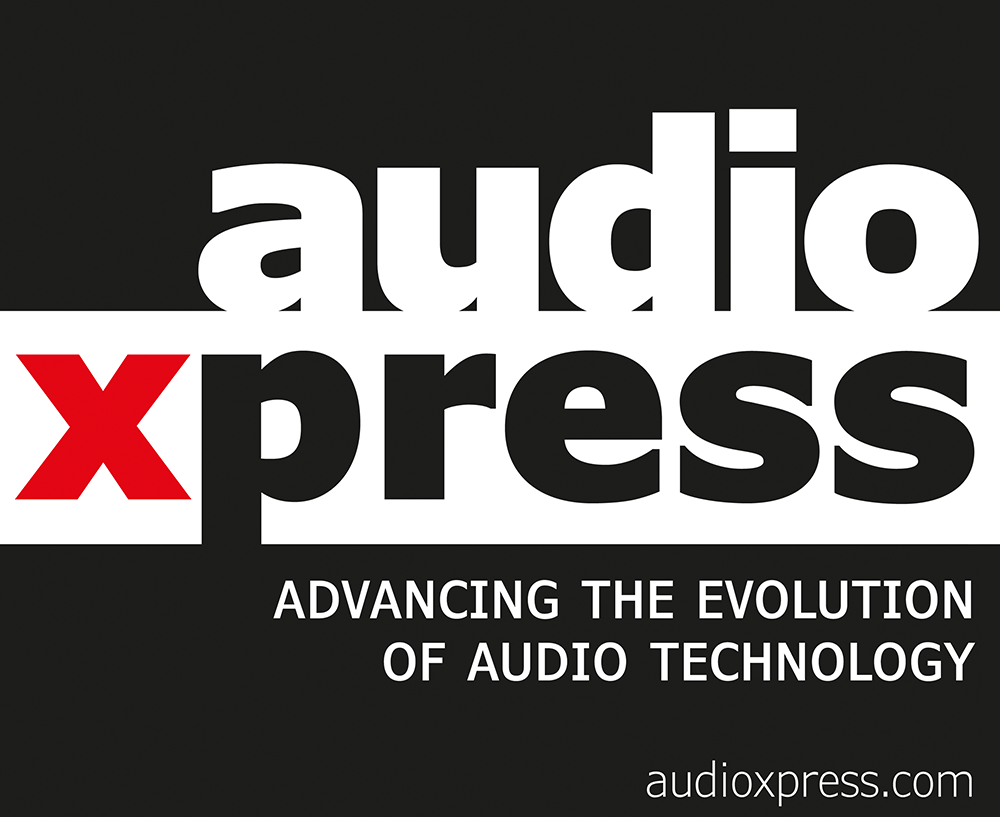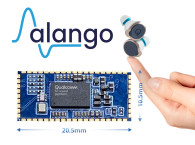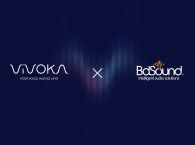
The Bela Gem series comprises two boards: Bela Gem Stereo and Bela Gem Multi, both designed to transform the PocketBeagle 2 single-board computer into a powerful platform for real-time audio and sensor processing. These open-source systems provide the tools needed to create innovative audio projects with minimal setup and configuration.
With two or ten channels, the Bela Gem family of boards offers flexible I/O and ultra-low latency for development of applications from haptic feedback to hearing aids. Due to the powerful quad-core 64-bit ARM chip on the PocketBeagle 2, advanced processing power is available for real-time digital signal processing, with all the flexibility that entails for any project.
Specifications detail support for up to 24-bit/96kHz audio, USB Type-C Device port and USB-A host port, Wi-Fi, Bluetooth, Ethernet, MIDI plug-and-play via both USB ports, and I2C (via dedicated pins and a QWIIC connector) and 5 V (can be battery powered). The Bela Gem Multi includes two extension boards with 4 stereo 3.5 mm jacks for all audio channels.

According to the company, Bela Gem was designed from the ground up for projects where timing and feedback matter. "With hard real-time performance and latency of 1 millisecond, it excels in use cases where responsiveness is critical: digital musical instruments, audio effects, haptics, assistive devices, and more. Add in high-resolution analog inputs and a generous spread of digital (GPIO) pins, and you’ve got a system ready to be the bridge between the digital and physical world," they explain.
The Bela Gem boards are the latest evolution of the company's proven line of embedded audio systems, which have powered thousands of creative projects worldwide - from interactive installations and electronic instruments to wearable sound devices and consumer electronics.
Backed by a decade of community-driven development, Bela comes with extensive documentation, an active user forum, and a growing library of hundreds of examples. Its tools are used not only by individual makers, but also in research labs, conservatories, and classrooms around the world, enabling hands-on learning and experimentation at every level.

Compact, powerful, and easily embedded, the Bela Gem Stereo dev board is ideal for engineers, artists, educators, and product designers exploring real-time audio in small, mobile formats. And with 10 channels of high-resolution audio I/O, including 8 DC-coupled audio outputs, alongside generous analog and digital I/O, the Bela Gem Multi board is ideal for projects that push the boundaries of multichannel sound and control, from spatial audio systems and ambisonic soundfields to custom speaker arrays and dynamic multichannel diffusion.
With these two boards, developers can also build haptic feedback systems with precise, low-latency control over vibrotactile actuators across many channels. The Bela Gem Multi allows interfacing with microphone arrays for spatial recording, beamforming, or advanced environmental sensing, as well as creating immersive home entertainment systems or electric vehicle sound designs, where every sound channel needs precise, low-latency control.
Both boards are also an excellent platform for Eurorack synths experimentation, combining multiple audio I/O with configurable AC/DC coupling, with rich analog and digital I/O for creating hardware interfaces and working with CV, gates, and triggers.
Developers can get started immediately with the Bela IDE, the web-based development environment at the heart of the Bela platform. It runs entirely in a browser and allows developers to write code, build projects, and interact with the boards in real time with no additional software needed. This IDE has just received its most significant upgrade yet, offering programming, debugging, and hardware monitoring, all into one intuitive interface.
Developers can monitor signals, generate test signals, and debug circuits with the IDE built-in tools. An advanced oscilloscope offers the clarity and precision of a professional electronics workstation, all in the browser, while projects can be programmed with a range of supported open-source languages. Bela supports C++, Pure Data, SuperCollider, FAUST, Max RNBO, and Csound, allowing users to work in the environment that best suits your creative and technical approach. The new Bela IDE ships with every Bela Gem board.

Once the first batch of Bela Gem boards has shipped, the company plans to release KiCad schematics and unrouted PCB files (CC BY-NC), Core Software under LGPL 3.0, and IDE released under GPL 3.0. Commercial licensing is also available.
Main documentation and tutorials are available here: https://learn.bela.io
Open source design files, code, and firmware: https://github.com/BelaPlatform
Community forum: https://forum.bela.io
Both Bela Gem systems are manufactured through trusted electronics production partners. All assemblies are RoHS compliant, CE marked, and EMC tested. All orders are shipped through Crowd Supply's logistics partner, Mouser Electronics.
Crowd Supply campaign
www.bela.io







